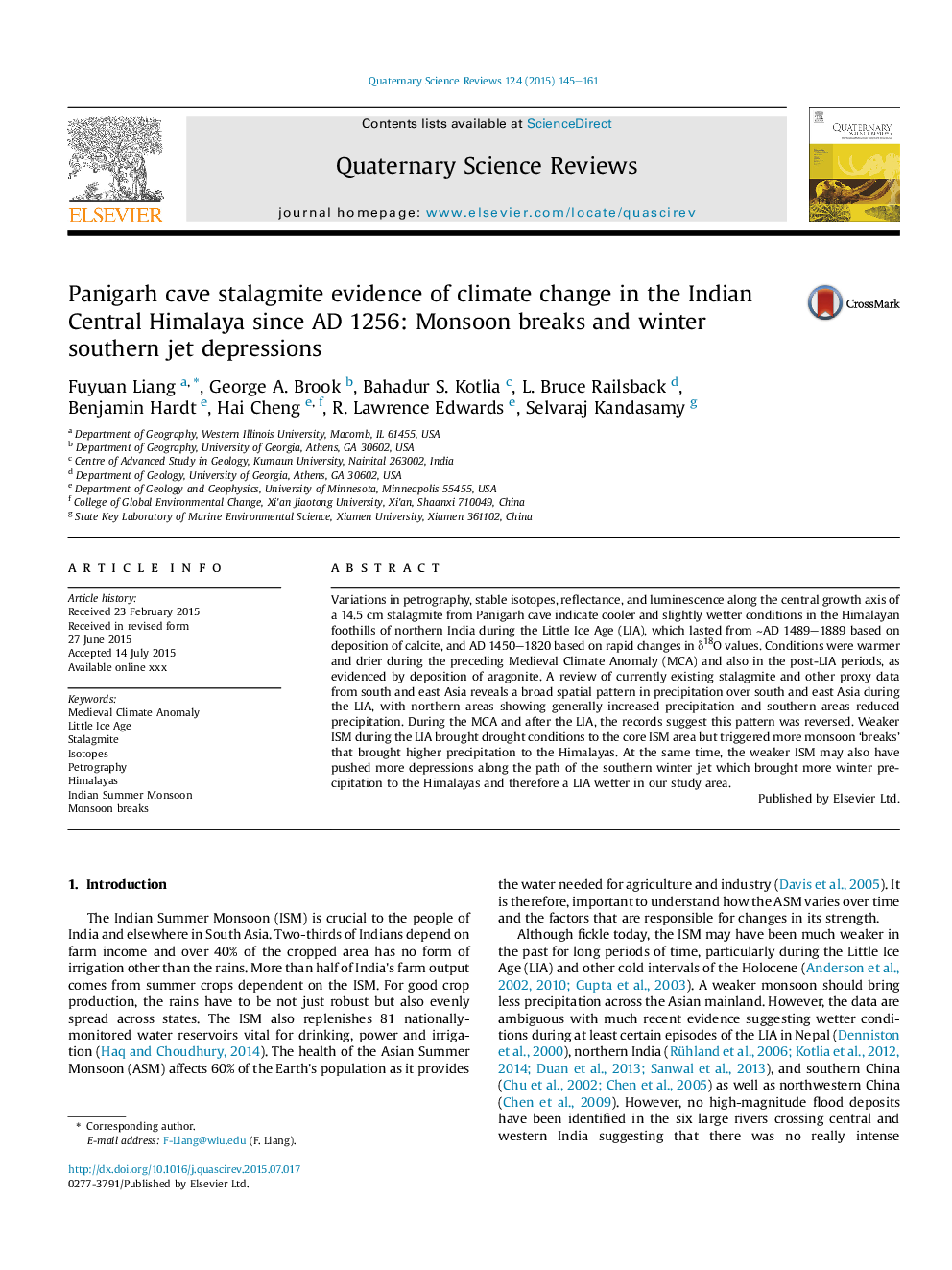| کد مقاله | کد نشریه | سال انتشار | مقاله انگلیسی | نسخه تمام متن |
|---|---|---|---|---|
| 6445511 | 1640810 | 2015 | 17 صفحه PDF | دانلود رایگان |
عنوان انگلیسی مقاله ISI
Panigarh cave stalagmite evidence of climate change in the Indian Central Himalaya since AD 1256: Monsoon breaks and winter southern jet depressions
ترجمه فارسی عنوان
شواهد تغییرات اقلیمی در هلیمالی هند مرکزی هند از 1256 میلادی به دلیل انفجار موسون و افراطی جت های زمستانی در جنوب غربی پانگره
دانلود مقاله + سفارش ترجمه
دانلود مقاله ISI انگلیسی
رایگان برای ایرانیان
کلمات کلیدی
موضوعات مرتبط
مهندسی و علوم پایه
علوم زمین و سیارات
زمین شناسی
چکیده انگلیسی
Variations in petrography, stable isotopes, reflectance, and luminescence along the central growth axis of a 14.5 cm stalagmite from Panigarh cave indicate cooler and slightly wetter conditions in the Himalayan foothills of northern India during the Little Ice Age (LIA), which lasted from â¼AD 1489-1889 based on deposition of calcite, and AD 1450-1820 based on rapid changes in δ18O values. Conditions were warmer and drier during the preceding Medieval Climate Anomaly (MCA) and also in the post-LIA periods, as evidenced by deposition of aragonite. A review of currently existing stalagmite and other proxy data from south and east Asia reveals a broad spatial pattern in precipitation over south and east Asia during the LIA, with northern areas showing generally increased precipitation and southern areas reduced precipitation. During the MCA and after the LIA, the records suggest this pattern was reversed. Weaker ISM during the LIA brought drought conditions to the core ISM area but triggered more monsoon 'breaks' that brought higher precipitation to the Himalayas. At the same time, the weaker ISM may also have pushed more depressions along the path of the southern winter jet which brought more winter precipitation to the Himalayas and therefore a LIA wetter in our study area.
ناشر
Database: Elsevier - ScienceDirect (ساینس دایرکت)
Journal: Quaternary Science Reviews - Volume 124, 15 September 2015, Pages 145-161
Journal: Quaternary Science Reviews - Volume 124, 15 September 2015, Pages 145-161
نویسندگان
Fuyuan Liang, George A. Brook, Bahadur S. Kotlia, L. Bruce Railsback, Benjamin Hardt, Hai Cheng, R. Lawrence Edwards, Selvaraj Kandasamy,
